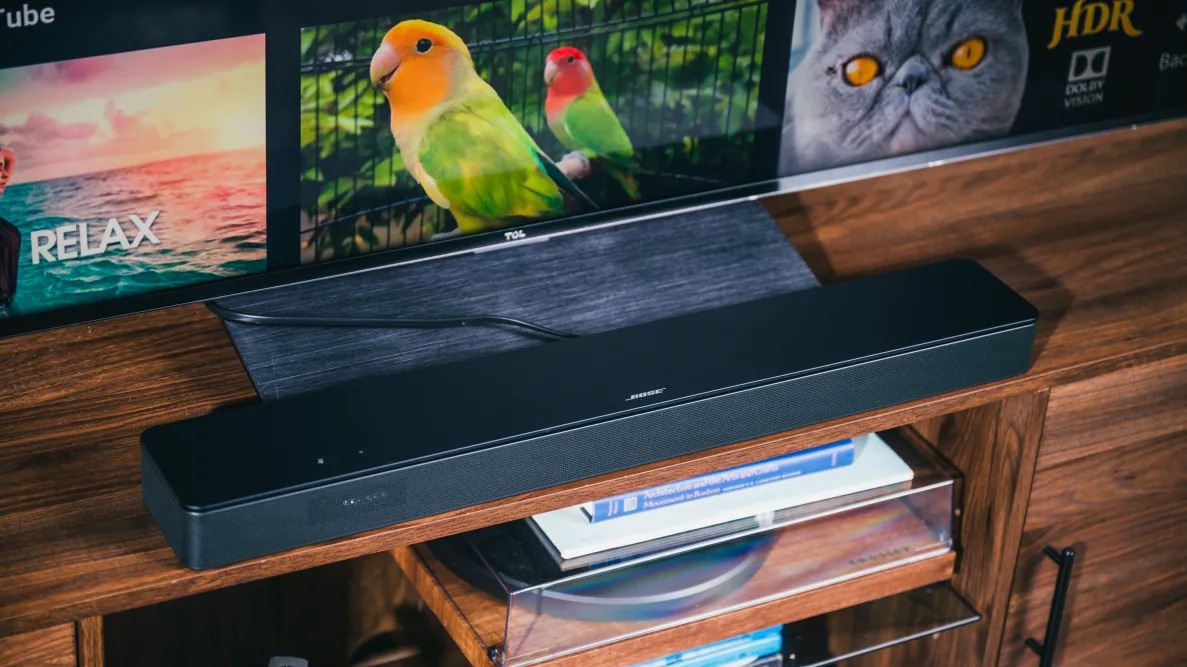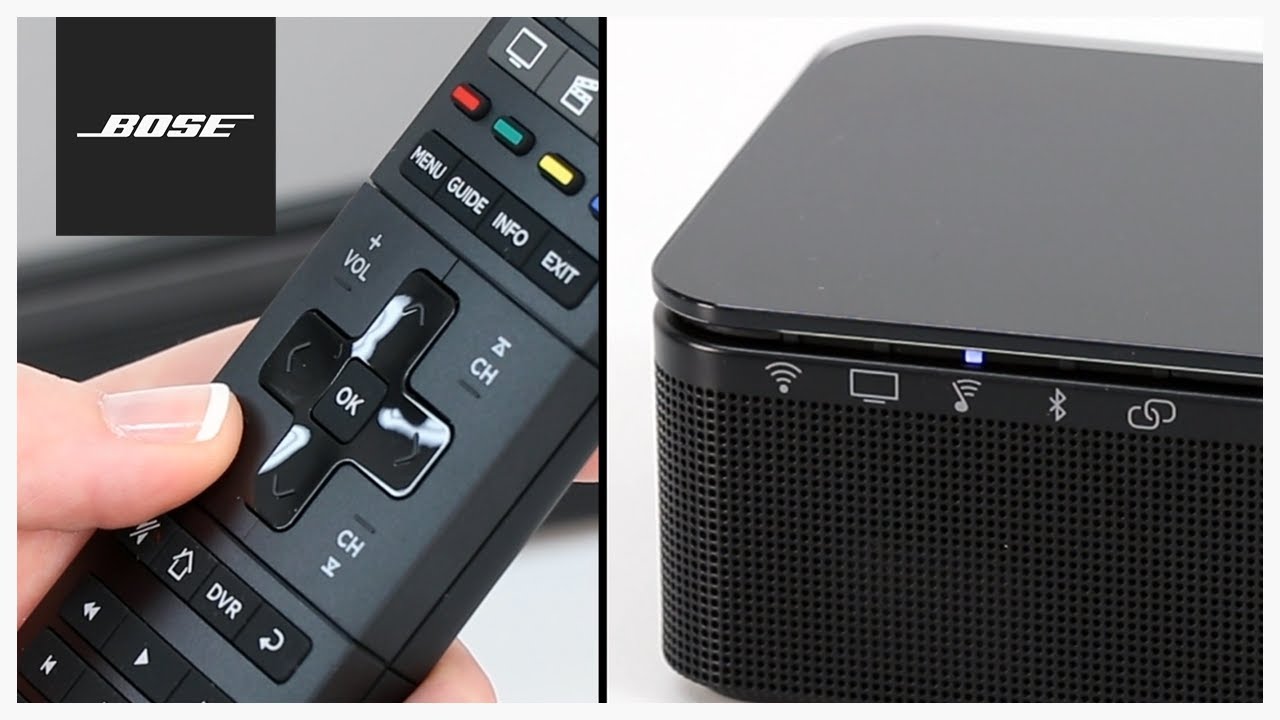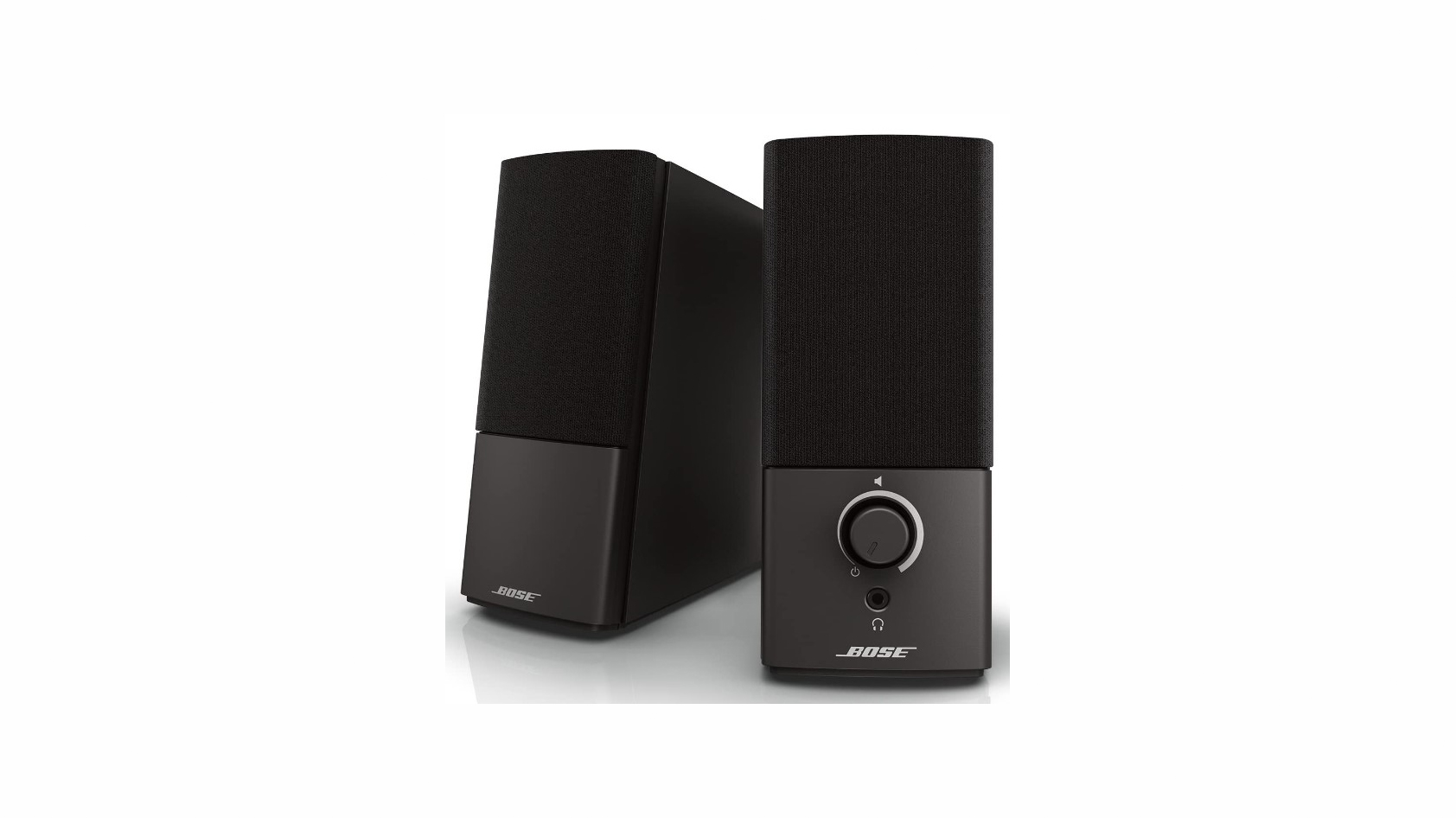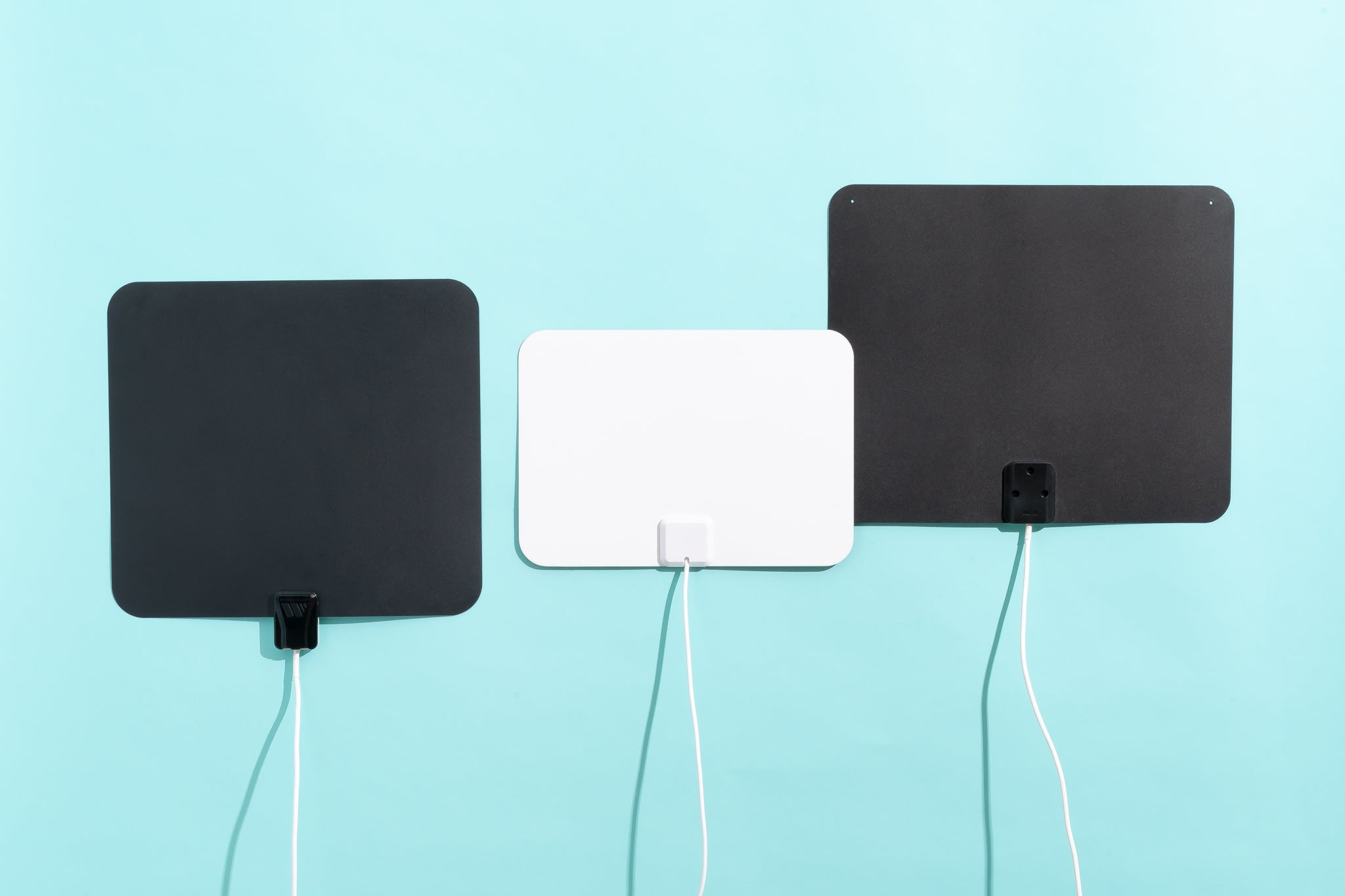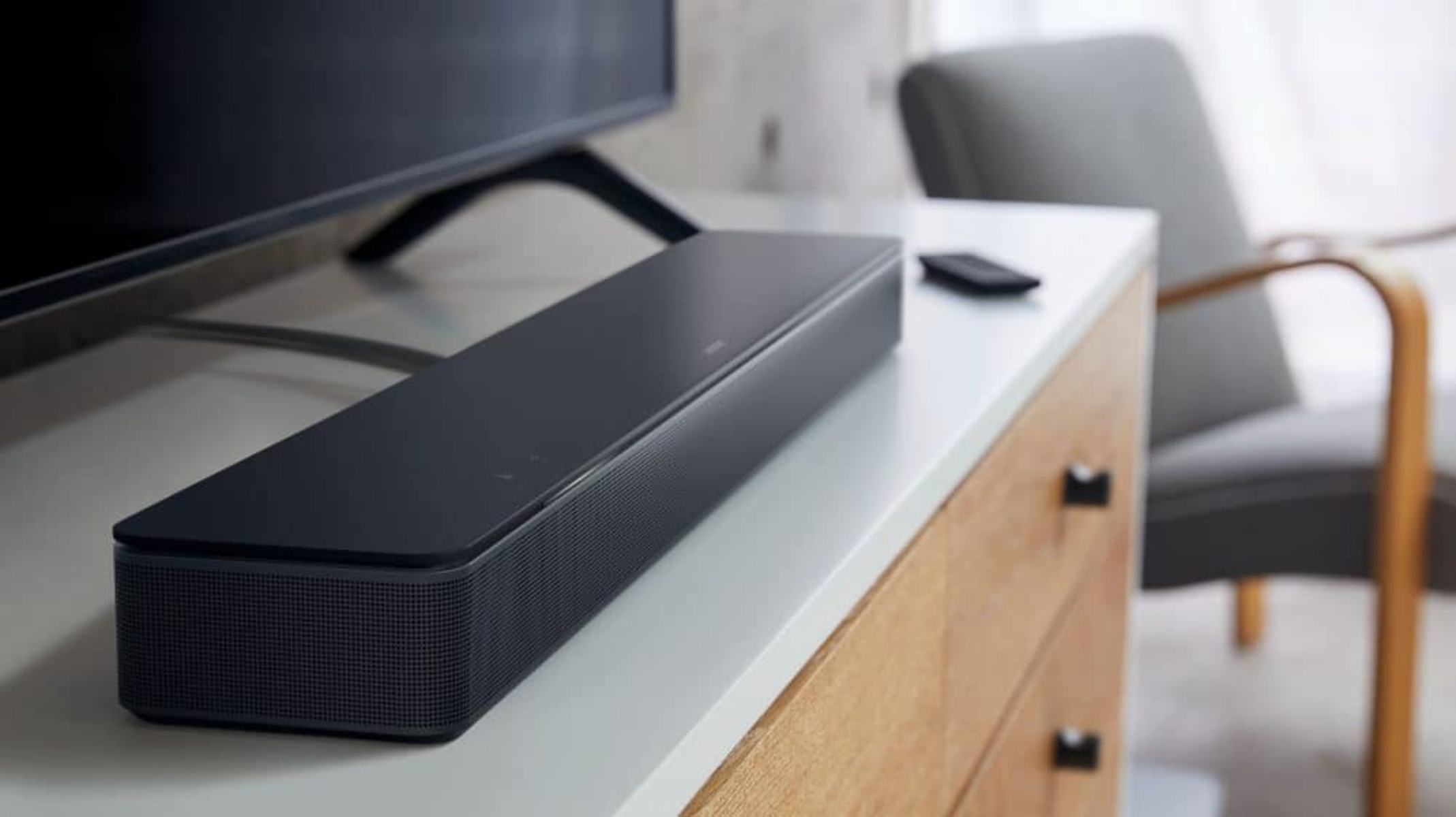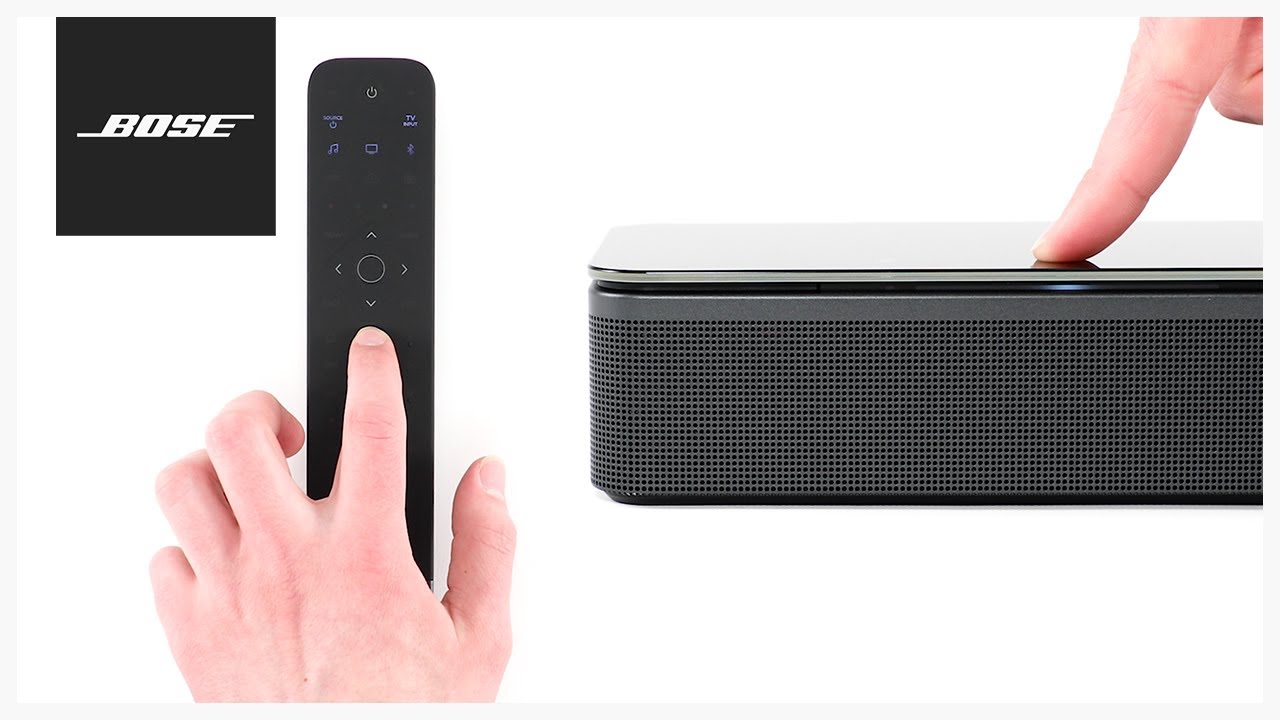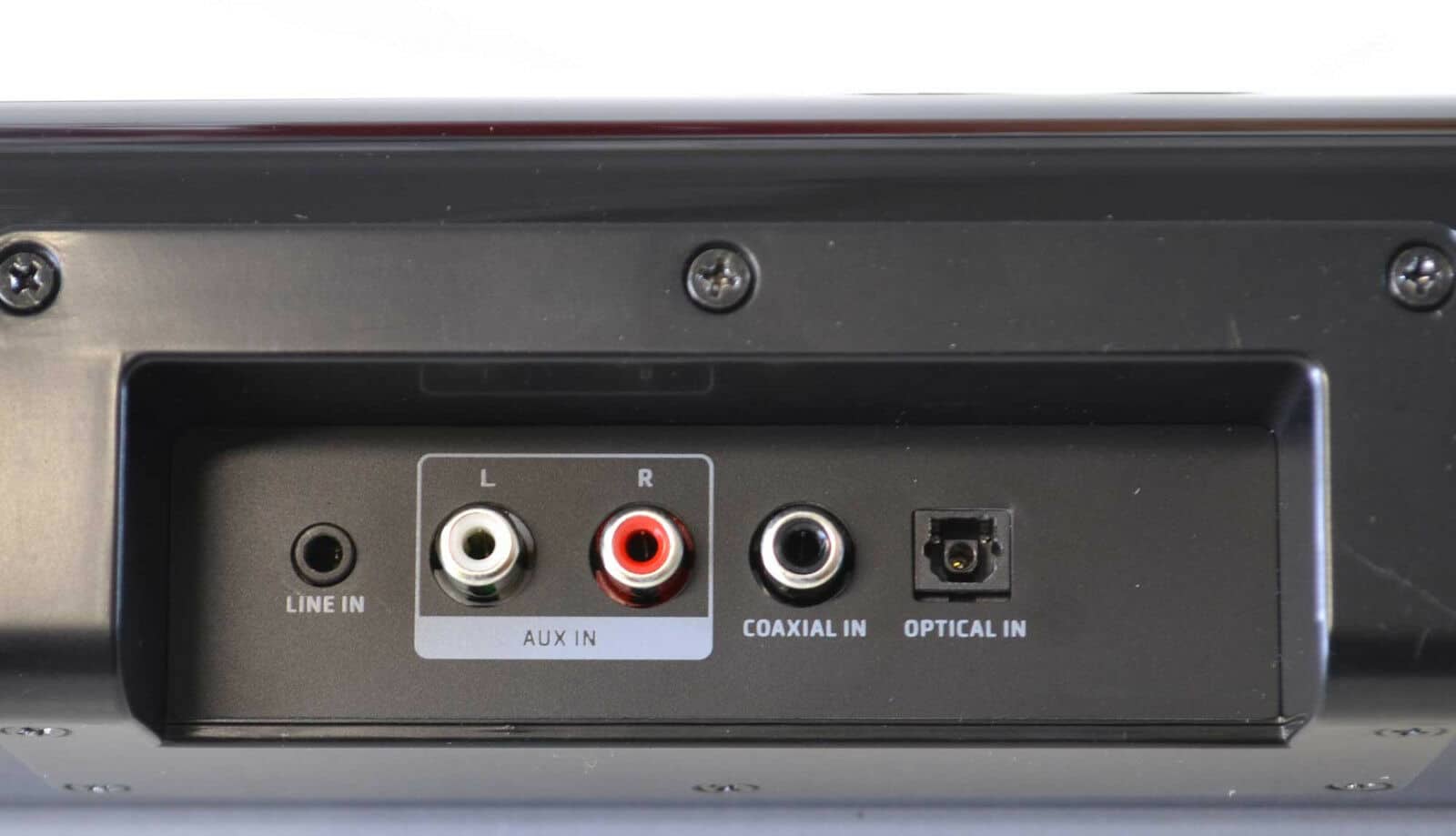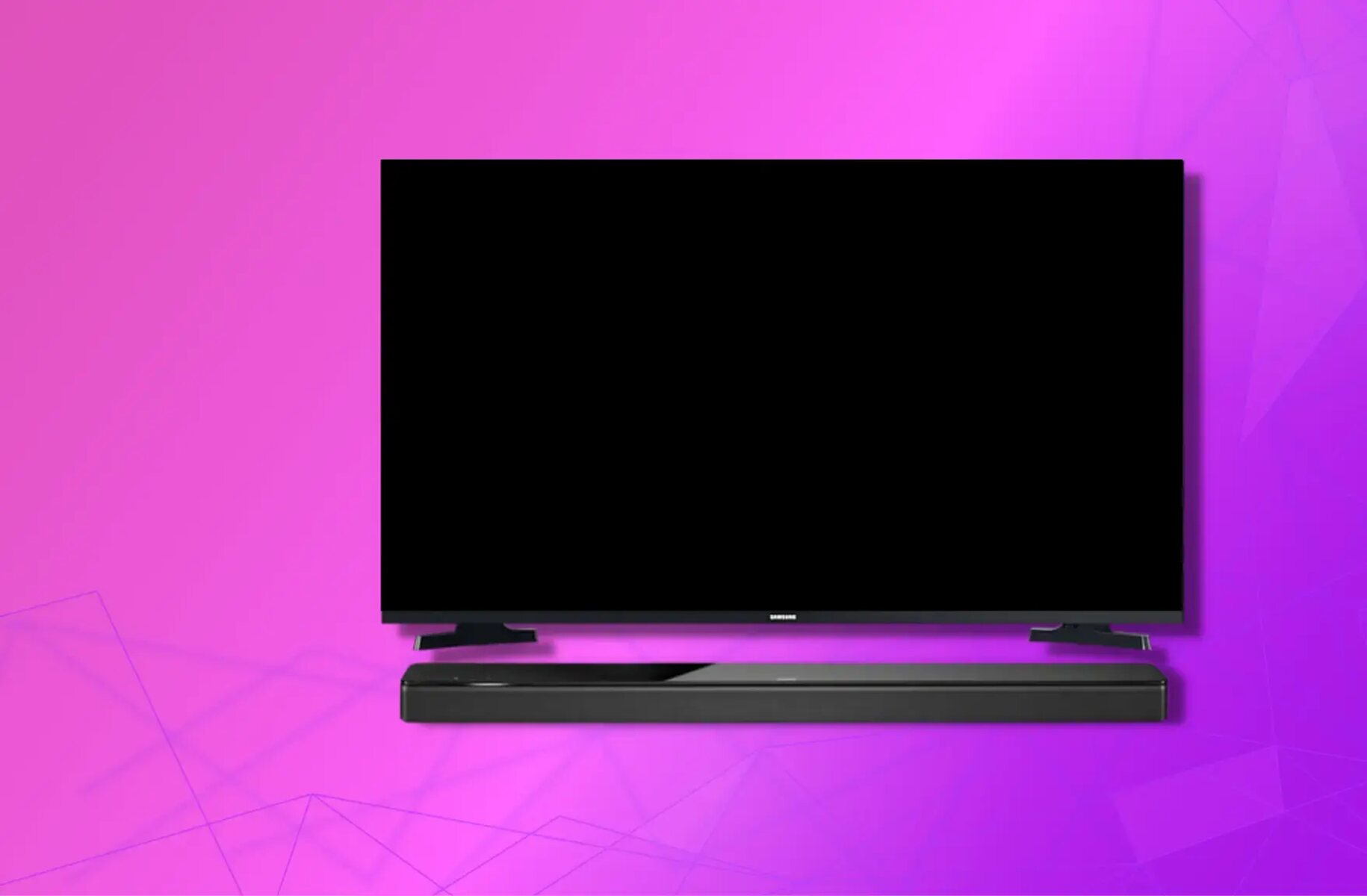Introduction
Are you looking to enhance your TV viewing experience by connecting your Bose 300 soundbar? Look no further! In this comprehensive guide, we will walk you through the step-by-step process of connecting your Bose 300 soundbar to your TV. Whether you prefer a wired or wireless setup, we’ve got you covered.
The Bose 300 soundbar is known for its exceptional audio quality and sleek design, making it a popular choice among audio enthusiasts. By connecting your soundbar to your TV, you can enjoy immersive sound and enhance your home entertainment system.
Before we dive into the connection process, it’s important to mention that the compatibility of your TV and soundbar is crucial. Ensure that your TV has the necessary ports and features to establish a connection with the Bose 300 soundbar.
In this guide, we will explore various connection methods, including HDMI ARC (Audio Return Channel), optical cable, and a combination of HDMI and optical connections. You can choose the method that best suits your needs and equipment.
So, let’s get started! Gather your tools and equipment, and prepare to take your TV viewing experience to new heights with the Bose 300 soundbar.
Step 1: Gather the necessary tools and equipment
To begin the process of connecting your Bose 300 soundbar to your TV, you will need to gather a few essential tools and equipment. Here’s what you’ll need:
- A Bose 300 soundbar
- A compatible TV with HDMI ARC or optical output
- An HDMI cable (if using HDMI ARC)
- An optical cable (if using optical connection)
- A power source for the soundbar (typically included in the package)
- A remote control or smartphone with the Bose SoundTouch app installed (for soundbar control)
Ensure that you have all the necessary tools and equipment within reach before proceeding to the next steps. Having everything ready will make the setup process much smoother.
If you don’t already have the Bose 300 soundbar, you can purchase it from authorized Bose retailers or through their official website. Make sure to check for any additional accessories that may be required for your specific TV model.
Once you have gathered all the tools and equipment, find a suitable location for your soundbar. Ideally, it should be placed in front of your TV or mounted on the wall beneath it. Ensure that there is enough space for the soundbar to emit high-quality sound without any obstructions.
With the tools and equipment at hand and a designated spot for your soundbar, you’re now ready to move on to the next steps. Let’s proceed to check the compatibility of your TV and soundbar to ensure a seamless connection.
Step 2: Check the TV and soundbar compatibility
Before proceeding with the connection process, it is crucial to ensure that your TV and Bose 300 soundbar are compatible. This step will help avoid any potential issues or incompatibilities that may arise during the setup.
First, check if your TV has an HDMI ARC (Audio Return Channel) port. HDMI ARC allows the soundbar to receive audio signals from the TV through a single HDMI cable. This eliminates the need for additional audio cables and simplifies the setup process. Consult your TV’s user manual or look for the HDMI ARC label near the HDMI ports to identify if your TV supports this feature.
If your TV doesn’t have an HDMI ARC port, check if it has an optical output. The optical output transmits audio signals as light pulses, which can be received by the Bose 300 soundbar through an optical cable. Look for the optical output port on your TV, typically labeled as “optical audio” or “digital audio out.”
It’s important to note that some TVs may have both HDMI ARC and optical output options. In such cases, you can choose the connection method that suits your preferences and equipment.
Once you have confirmed the compatibility of your TV with either HDMI ARC or optical output, check if your Bose 300 soundbar has the corresponding input port. The soundbar should have an HDMI ARC input or an optical input to establish a connection with your TV.
If your TV and soundbar are compatible, you can proceed to the next step. However, if your TV lacks HDMI ARC or optical output, you may need additional equipment, such as an HDMI ARC extractor or an HDMI audio extractor with optical output, to establish the connection.
By ensuring the compatibility of your TV and soundbar, you are setting the foundation for a successful connection. Now that you are confident in the compatibility, let’s move forward to choosing the appropriate connection method for your setup.
Step 3: Choose the connection method
With the compatibility of your TV and Bose 300 soundbar confirmed, it’s time to decide on the best connection method for your setup. Depending on the available ports on your TV and soundbar, as well as your personal preferences, you have a few options to choose from.
If your TV has an HDMI ARC port and your soundbar has an HDMI ARC input, the HDMI ARC connection method is recommended. This method allows for both audio and control signals to be transmitted through a single HDMI cable. It simplifies the setup and enables features like power on/off synchronization between the TV and soundbar.
Alternatively, if your TV has an optical output and your soundbar has an optical input, you can opt for the optical cable connection. The optical cable will transmit audio signals from the TV to the soundbar, ensuring high-quality sound reproduction.
In some cases, your TV may have both HDMI ARC and optical output options. In such situations, you can choose between the two connection methods based on your preferences and the capabilities of your TV and soundbar.
Consider your specific setup requirements, such as the location of your TV and soundbar relative to each other and the availability of HDMI cables or optical cables. Additionally, keep in mind any limitations or benefits associated with each connection method.
Ultimately, the chosen connection method should deliver optimal audio performance while being convenient and compatible with your TV and soundbar. Once you have made your decision, proceed to the respective steps in the following sections to complete the connection process.
Now that you have selected the appropriate connection method, let’s move on to connecting your Bose 300 soundbar to your TV using HDMI ARC. If you have opted for a different connection method, please proceed to the respective section for detailed instructions.
Step 4: Connect the soundbar to the TV using HDMI ARC
If you have chosen to connect your Bose 300 soundbar to your TV using HDMI ARC, follow these step-by-step instructions:
- Ensure that both your TV and soundbar are powered off.
- Locate the HDMI ARC port on your TV and the HDMI ARC input on your soundbar. They are usually labeled as “HDMI ARC.” Connect one end of the HDMI cable to the HDMI ARC port on your TV and the other end to the HDMI ARC input on your soundbar.
- Power on your TV and soundbar.
- Access your TV’s audio settings menu and enable HDMI ARC. This setting may be located under the “Audio” or “Sound” menu. Consult your TV’s user manual for detailed instructions on how to enable HDMI ARC.
- Adjust the sound settings on your TV to ensure that the audio is coming from the soundbar. You might need to change the audio output settings on your TV to “External Speakers” or “Audio System” instead of the TV’s built-in speakers.
- Test the soundbar connection by playing audio from your TV. You should hear the sound coming from the soundbar.
- Use your TV’s remote control or the Bose SoundTouch app on your smartphone to control the volume and other sound settings of your soundbar.
By following these steps, you have successfully connected your Bose 300 soundbar to your TV using HDMI ARC. Enjoy the immersive sound experience and continue to the next step to explore an alternative connection method.
Step 5: Connect the soundbar to the TV using optical cable
If you have chosen to connect your Bose 300 soundbar to your TV using an optical cable, follow these step-by-step instructions:
- Make sure that both your TV and soundbar are turned off.
- Locate the optical output on your TV and the optical input on your soundbar. The optical output on your TV may be labeled as “optical audio” or “digital audio out.” Connect one end of the optical cable to the optical output on your TV and the other end to the optical input on your soundbar.
- Power on your TV and soundbar.
- Access your TV’s audio settings menu and select the optical output as the audio source. This setting may be found under the “Audio” or “Sound” menu. Refer to your TV’s user manual for detailed instructions on selecting the optical output.
- Adjust the sound settings on your TV to ensure that the audio is being played through the soundbar. Set the audio output to “External Speakers” or “Audio System” instead of the TV’s built-in speakers.
- Test the soundbar connection by playing audio from your TV. You should hear the audio coming from the soundbar.
- Control the volume and other sound settings of your soundbar using either the remote control provided with the soundbar or the Bose SoundTouch app on your smartphone.
By following these steps, you have successfully connected your Bose 300 soundbar to your TV using an optical cable. Enjoy the enhanced audio experience and move on to the next step to explore an alternative connection method.
Step 6: Connect the soundbar to the TV using HDMI and optical combination
If you have chosen to connect your Bose 300 soundbar to your TV using a combination of HDMI and optical cables, follow these step-by-step instructions:
- Ensure that both your TV and soundbar are powered off.
- Locate the HDMI output on your TV and connect one end of the HDMI cable to this port.
- Connect the other end of the HDMI cable to the HDMI input on your soundbar.
- Next, locate the optical output on your TV and connect one end of the optical cable to this port.
- Connect the other end of the optical cable to the optical input on your soundbar.
- Power on your TV and soundbar.
- Access your TV’s audio settings menu and set the audio output to “External Speakers” or “Audio System”.
- Adjust the sound settings on your TV to ensure that the audio is routed to the soundbar.
- Test the speaker connection by playing audio from your TV. You should hear the sound coming from the soundbar.
- You can use either the remote control that comes with the soundbar or the Bose SoundTouch app on your smartphone to adjust the volume and other sound settings of the soundbar.
Following these steps, you have successfully connected your Bose 300 soundbar to your TV using a combination of HDMI and optical cables. Enjoy the enhanced audio quality and continue to the next step to adjust the soundbar settings on your TV.
Step 7: Adjust the soundbar settings on the TV
After successfully connecting your Bose 300 soundbar to your TV, it’s time to adjust the soundbar settings on your TV to optimize the audio performance. Follow these steps to ensure the best possible sound quality:
- Access the settings menu on your TV. This can usually be done by pressing the “Menu” button on your TV remote.
- Navigate to the audio settings. Look for options such as “Audio”, “Sound”, or “Sound Settings”. The location of these settings may vary depending on your TV brand and model.
- Adjust the sound output mode to “External Speakers” or “Audio System”. This setting directs the audio output to your Bose 300 soundbar instead of the TV’s built-in speakers.
- Explore additional audio settings on your TV, such as equalizer settings or sound presets. These settings allow you to customize the sound according to your preferences and the content you’re watching.
- Ensure that any virtual surround or sound enhancement modes are disabled on your TV. These modes can sometimes interfere with the sound produced by your soundbar.
- Test the audio by playing different types of content, such as movies, TV shows, or music. Adjust the volume and fine-tune any settings as needed to achieve your desired sound quality.
By adjusting the soundbar settings on your TV, you can optimize the audio performance and tailor it to your preferences. Take the time to explore the available settings and make any necessary adjustments for the best possible audio experience.
Now that you have adjusted the soundbar settings on your TV, you’re ready to move on to the final step: testing the soundbar connection. Let’s proceed to the next step to ensure that everything is working correctly.
Step 8: Test the soundbar connection
Once you have completed the connection and adjustment of settings, it’s crucial to test the soundbar connection to ensure that everything is working correctly. Follow these steps to verify the soundbar’s functionality:
- Play different types of audio content on your TV, such as movies, TV shows, or music.
- Listen carefully and ensure that the audio is coming from the soundbar and not the TV’s speakers. The sound should be richer, clearer, and more immersive.
- Adjust the volume on the soundbar and check that it increases or decreases the sound level accordingly. Ensure that the volume control on your TV or TV remote does not affect the soundbar volume.
- Switch between different audio sources on your TV, if available, to ensure that the soundbar is receiving audio signals from all sources, such as cable or satellite TV, gaming consoles, or streaming devices.
- Check if the soundbar and TV power on and off simultaneously. This is a feature enabled by HDMI ARC, allowing the TV to control the soundbar’s power state. If it is not working, consult the user manual or support resources for troubleshooting guidance.
- Continue testing various audio content and adjusting settings as needed until you are satisfied with the sound quality and performance of your Bose 300 soundbar.
By testing the soundbar connection, you can ensure that everything is functioning properly and that the sound is being delivered through the soundbar as intended. If you encounter any issues during the testing process, consult the user manual or reach out to the Bose customer support team for assistance.
Congratulations! You have successfully connected, adjusted, and tested your Bose 300 soundbar with your TV. Enjoy the immersive audio experience that your newly connected soundbar brings to your home entertainment setup!
Conclusion
Connecting your Bose 300 soundbar to your TV can greatly enhance your home entertainment experience. By following the step-by-step instructions in this guide, you have successfully established the connection and optimized the sound settings to ensure optimal audio performance.
Throughout this guide, we discussed different connection methods, including HDMI ARC, optical cable, and a combination of HDMI and optical cables. Depending on the available ports on your TV and soundbar, you can choose the method that best suits your needs and preferences.
Remember to gather the necessary tools and equipment before starting the connection process. Ensure that your TV and soundbar are compatible by verifying the presence of HDMI ARC or optical output ports.
Once the connection is established, adjust the sound settings on your TV to ensure the sound output is directed to the Bose 300 soundbar. Take advantage of the additional audio settings on your TV to customize the sound according to your preferences.
Finally, test the soundbar connection by playing various types of audio content and ensure that the sound is coming from the soundbar and not the TV’s built-in speakers. Make sure the volume control on the soundbar is functioning properly and sync the power on/off feature, if applicable.
Now that you have successfully connected and tested your Bose 300 soundbar, sit back, relax, and enjoy the immersive sound experience that it brings to your TV viewing. Whether you’re watching movies, TV shows, or listening to music, your home entertainment setup has been taken to the next level.
If you encounter any difficulties during the connection process or have further questions, refer to the user manual or seek assistance from the Bose customer support team.
Thank you for following this guide, and we hope you enjoy your Bose 300 soundbar and the enhanced audio experience it provides!







